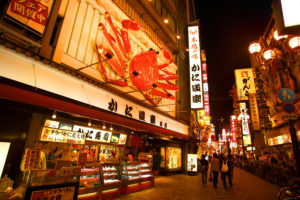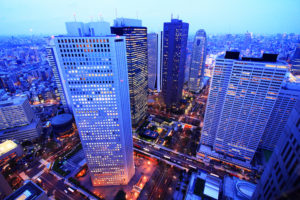Japan has the risk of earthquake.
You remember the earthquake in Kobe in 1995 and Tsunami disaster in Fukushima in 2011.
Although Japan’s earthquake-resistant technology of buildings is considerably advanced than that of other countries,
we have to be realistic.
In the interest of personal safety and protecting the value of what is likely your biggest financial asset,
prospective buyers and investors should be aware of any natural disaster risk impacting a potential property purchase.
If the building is broken or collapsed due to an earthquake, you cannot get rent.
In most cases, learning about natural disaster risk will not stop investment, but it will help investors make a better-informed decision about where to buy and preparing in terms of appropriate insurance coverage depending on the type of natural disaster risks most affecting the property.
Unfortunately we don’t have a comprehensive ‘natural disaster risk score’ covering whole Japan announced by the government or a certain institute but on the prefecture and city level, many prefectures and cities
release ‘hazard maps’ to show the risks of natural disasters
in the area.
The allure of Japan’s stable political situation and attractive
yield for most, sometimes outweigh any concern of earthquake threat, however we have to note that
investors are not only able to survive but in fact thrive with insurance and property improvements after a quake.
Just to give an idea, property price in Kobe overall has been defensive since the earthquake but have increased four years in a row from 2014.
How to avoid the earthquake risk ?
Obviously it is difficult to prevent the natural disasters.
I recommend investors make sure they take two measures to protect them from carrying the burden of replacing a roof , etc.
1) Have adequate earthquake Insurance
2) Invest in the earthquake-resistant property

Let’s take a closer look.
1) Have earthquake Insurance
“Earthquake insurance” is the most effective as a measure to mitigate the earthquake risk.
– What is earthquake insurance ?
The earthquake insurance system is jointly managed by the national government and non-life insurance industry.
The insurance premium is controlled by the government.
Earthquake insurance compensates for damage caused by natural disasters such as earthquakes, tsunamis, and eruptions that are not compensated by the standard fire insurance.
You need insure for the earthquake together with the standard fire insurance.
(In other words, you cannot buy insurance policy carving out only earthquake)
– What types of earthquake Insurance you should have ?
There two type of earthquake insurance in Japan.
One is earthquake insurance to cover the property which is owned by one landlords (typically investors)
Another one is earthquake insurance for the communal part of the building(condominium)
the condominium association and or each owner of condominium cover.
If you purchase the entire property as an investor, you will have to have the earthquake insurance for the whole property.
– What sort of coverage you should buy ?
The maximum value you can insure for building insurance is limited to 50 million yen and
the amount for household goods in the condominium is limited to 10 million yen.
Consider to insure the maximum value for your asset.
– How much is the insurance premium
The cost of earthquake insurance is determined by several different factors. In addition to the location of the property, insurers also consider the materials used in its construction; the way it is constructed; the integrity of its foundation; the number of stories; the insured value and the policyholder’s chosen level of coverage.
There is a discount system according to the earthquake-proof and seismic isolation performance of the building.
Premium is usually in the range of 10,000 yen to 30,000 per 10 million value of the property per year.
2) Invest in the earthquake-resistant property
Besides buying the earthquake insurance, selecting
one of the properties applicable to the “New Earthquake Resistant Standards” is recommendable.
“New earthquake resistance standard” was introduced by the government in 1981.
The new standards, established in 1981, require that buildings must not collapse when an earthquake measuring
upper six or seven on the Japanese intensity scale occurs.
Therefore, buildings built after June 1981 can be relatively safer in terms of earthquake-resistance. There are a lot of properties that were built before the introduction of the law in 1981 and they often generate the attractive yield, but I don’t recommend investing in such properties.
Conclusion
Don’t forget to buy the earthquake insurance and select a property which meets the New Earthquake Resistant Standards 1981.
Please note that sellers of buildings constructed before 1981 — when a new earthquake-resistance standard was introduced —
is obliged to submit earthquake-resistance information.
There was a report that Sompo Japan’s new product would be the nation’s first fire insurance, in combination with earthquake insurance that will be used to cover 100 percent of the damage caused by earthquakes, which may be worth looking.
earthquake insurance by ministry of finance (in Japanese)
Tokyo metropolitan hazard report and hazard map (in Japanese)
Asahi shimbun report about the hazard map of Tokyo on February 15, 2018

Toshihiko Yamamoto
Real estate investing consultant and author.
Toshihiko is currently writing a book about the real estate investing in Japan
for foreign investors.
Founder of Yamamoto Property Advisory in Tokyo.
International property Investment consultant and licensed
real estate broker (Japan).
He serves the foreign companies and individuals to buy and sell
the real estates in Japan as well as own homes.
He holds a Bachelor’s degree in Economics from
Osaka Prefecture University in Japan
and a MBA from Bond University in Australia

